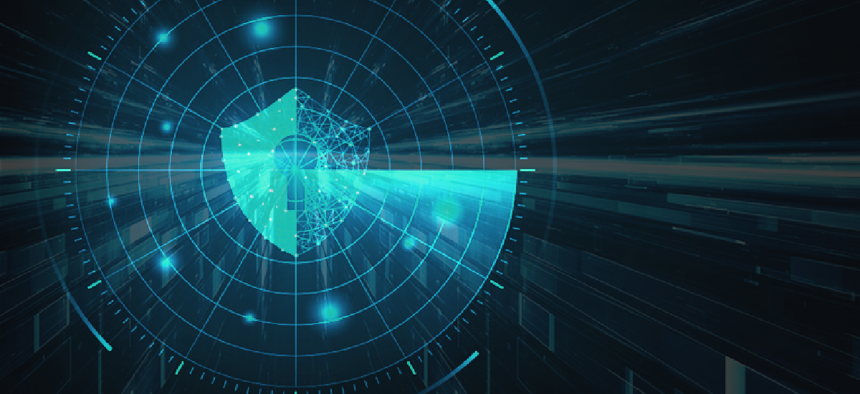Advanced tech and human operators

Artificial intelligence and machine learning tools are helping perform cybersecurity tasks, but humans remain central to the process, experts say.

Artificial intelligence and machine learning tools are helping perform cybersecurity tasks, but humans remain central to the process, according to federal agency data officers.
"I think the next big movement here is on the data science side. In your [security operations center] your security teams have to have data scientists," Adrian Monza, deputy chief information security officer and chief security architect at U.S. Citizenship and Immigration Services, said at an AFCEA Bethesda panel.
The amount of data generated by AI and machine learning cybersecurity tools is staggering, panelists agreed. Those automated tools that are tackling repetitive monitoring work are producing bytes by the trillion.
"At USCIS, we're bringing in terabytes of log data per day, and we're not a particularly large agency. You have to have data scientists" to make sense of it, Monza said.
Ronald Thompson, chief data officer at NASA, said that data analysts have to ask "why" of the data, "not just follow a rote script, not just check off a compliance box." That kind of questioning, he said, leads to a discovery of "things we didn't even think of" in the agency's operations.
The top-down, military model of managing data, "is defeatist," said Conrad Bovell, director of information systems security at the Centers for Medicare & Medicaid Services. Data gathered by new technologies can be interpreted as "normal" by machines, he said. But a deeper dive by human analysts into that data can reveal a larger, more meaningful picture.
The idea that people, not technology, are the fulcrum of agency cybersecurity is not a new one, but it is a constant one, according to panelists.
Thompson and Janet Vogel, chief information security officer at the Department of Health and Human Services, said HHS is taking some innovative steps to get humans better integrated into cybersecurity development.
NASA has embedded a cybersecurity crew in the development stages of its Artemis Moon-to-Mars mission, Thompson said. The developers will be involved in "baking in" cybersecurity along the entire path of the mission's operations. The program aims to have an astronaut on the moon by 2024 and develop sustainable technologies that can then be used for a later manned mission to Mars.
Thompson told FCW after his remarks that there are "a couple" of cybersecurity operators involved in the mission so far, but more will be added.
HHS, according to Vogel, has created an "escape room" to foster cybersecurity development among its employees. She said the agency is using the "experiential event" as part of National Cybersecurity Awareness Month in October. Participants go into a room, where stations are set up with cybersecurity questions and challenges. Each station's tasks have to be completed successfully to move on to the next. Teams are timed and scored on their work.





